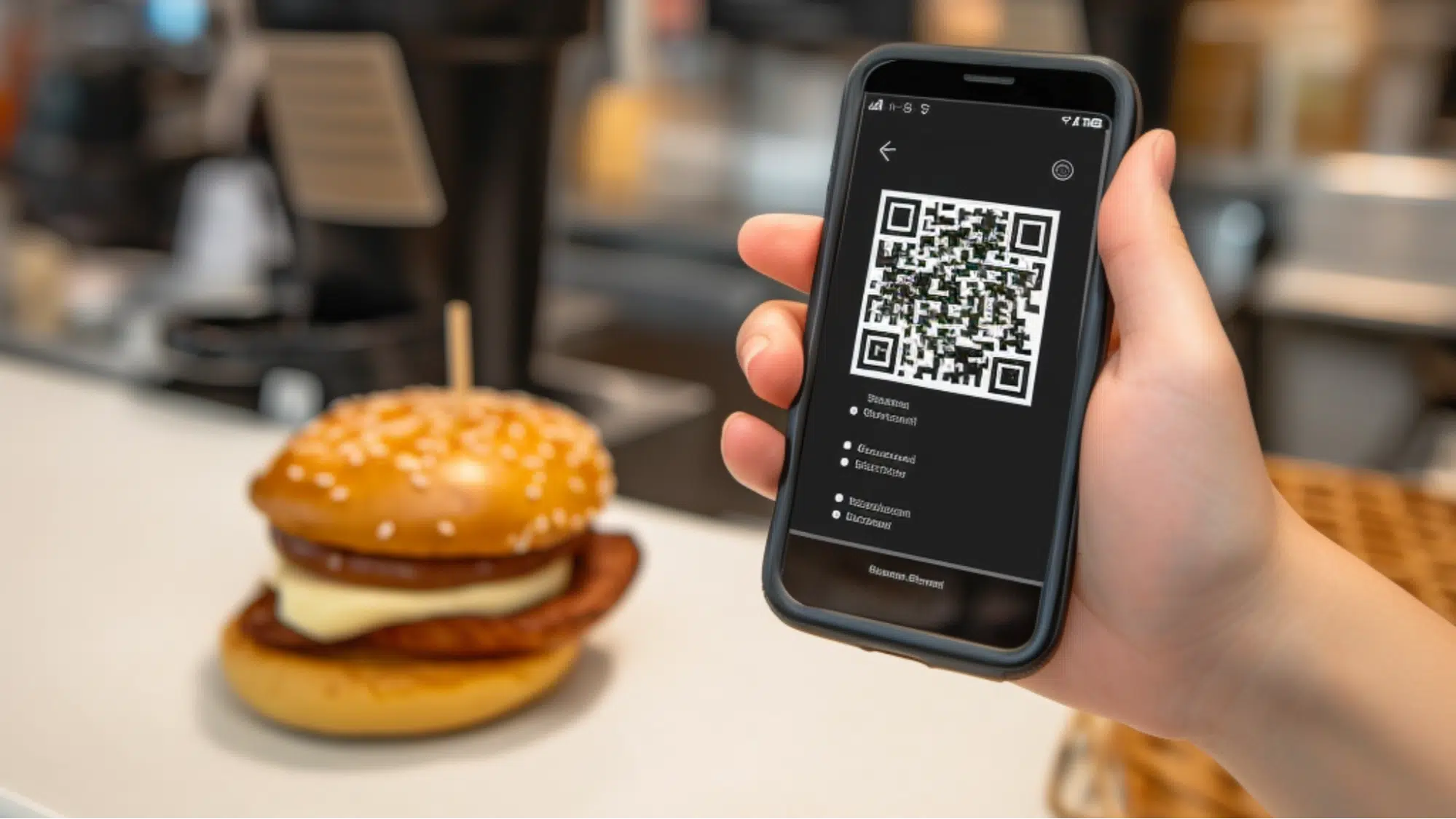In the highly competitive world of quick service restaurants, improving the customer experience is critical to business success. One way to achieve this is through the implementation of advanced payment processing solutions such as POS (Point of Sale) systems.
A POS system is a software solution that simplifies restaurant management by enabling businesses to process credit card payments, manage orders and inventory, and monitor employee performance. This technology solution helps improve customer experiences and streamline operations, which ultimately increases customer satisfaction and loyalty, and in turn, boosts sales and revenue.
In this article, we will delve deeper into the benefits of using Quick Service Restaurant POS systems and provide insights into choosing the right POS system for your restaurant business. We will also discuss the advanced features of POS systems and provide case studies of successful implementation to show you how these technologies can improve the customer experience in your restaurant.
The Benefits of Using Quick Service Restaurant POS Systems
Quick Service Restaurant POS systems are an essential tool for improving business operations and enhancing the customer experience. Many quick service and fast-casual restaurant businesses have successfully implemented POS systems to improve their operations and customer experiences. For example, Panera Bread implemented a POS system that enabled them to reduce order taking times by 50%, while McDonald’s has incorporated POS technology in their self-service kiosks to improve order accuracy and reduce waiting times.
Here are some of the benefits of implementing a POS system in your restaurant:
- Streamlining operations and improving efficiency
POS systems automate many of the manual processes involved in restaurant management, including order taking, payment processing, inventory tracking, and employee performance monitoring. By reducing the time and effort required to complete these tasks, your staff can focus on other important aspects of your business, such as food preparation, customer service, and upselling.
- Enhancing customer experiences and satisfaction
With a POS system, customers can place their orders more quickly and accurately, which can help reduce waiting times and improve their overall dining experience. Additionally, POS systems can integrate with other technologies such as mobile apps, loyalty programs, and online ordering systems, which can help enhance the customer experience and increase satisfaction.
- Increasing sales and revenue
POS systems can help you track sales trends, identify popular items, and monitor the performance of your staff. This information can help you make informed decisions about menu changes, promotions, and pricing strategies, which can ultimately help increase your sales and revenue.
- Reducing human error
Manual order taking and payment processing can be prone to human error, which can lead to mistakes in orders, inaccurate billing, and dissatisfied customers. POS systems can help reduce these errors by automating these processes, which can help improve accuracy and ultimately lead to happier customers.
Choosing the Right POS System for Your Restaurant Business
When it comes to selecting the right POS system for your restaurant business, there are several important factors to consider. Here are some steps to help you make the best decision:
- Identifying your specific business needs
The first step is to identify your specific business needs. What types of payments do you accept? Do you need to track inventory? Do you need mobile POS and payment options? Do you want to integrate loyalty programs or online ordering systems? Answering these questions will help you determine what features and capabilities you need in a POS system.
- Understanding the different types of POS systems available
There are different types of POS systems available, including traditional POS systems, cloud-based POS systems, and mobile POS systems. Traditional POS systems are hardware-based and require on-site installation and maintenance, while cloud-based POS systems are software-based and can be accessed remotely via the internet. Mobile POS systems are designed for use on mobile devices such as tablets and smartphones and can be useful for processing payments and managing orders on the go.
- Comparing features and costs
Once you have identified your business needs and understand the different types of POS systems available, you can begin comparing features and costs. Look for a POS system that has the features you need, such as payment processing, inventory tracking, and order management, at a price point that fits your budget.
Implementing POS Technology Solutions for Your Restaurant
POS systems have been successfully implemented in various types of restaurant businesses, including quick service restaurants, fast-casual restaurants, and fine dining establishments. For example, BurgerFi implemented a POS system that enabled them to process payments faster and more accurately, while also tracking sales trends and customer data. Similarly, Morton’s The Steakhouse used a POS system to improve table management and increase table turns, ultimately leading to increased revenue.
Implementing POS technology solutions for your restaurant can be a complex process, but with the right approach, it can also be a highly rewarding investment. Here are some key considerations for successful implementation:
- Working with a professional team to install and integrate POS systems
Working with a professional team to install and integrate your POS system is essential to ensuring a smooth implementation process. A professional team can help you select the right hardware and software, customize your system to meet your specific business needs, and ensure that it is properly installed and integrated with your existing technologies.
- Staff training and adoption
Staff training and adoption are critical to the success of your POS system implementation. Make sure to provide your staff with comprehensive training on how to use the system, including how to process payments, manage orders, and access customer data. Encourage your staff to ask questions and provide ongoing support to ensure that they feel comfortable using the system.
- Maintaining and upgrading your system for optimal performance
Maintaining and upgrading your POS system is crucial for ensuring optimal performance and avoiding costly downtime. Regularly updating your software, replacing hardware components as needed, and backing up your data can help keep your system running smoothly and securely.
Advanced Features of Restaurant POS Systems
There are many success stories of restaurants that have successfully incorporated advanced POS technology solutions to improve their operations and customer experiences. For example, Panera Bread implemented a self-service kiosk system that enabled customers to customize their orders and pay with Apple Pay, leading to increased sales and reduced wait times.
Restaurant POS systems have evolved over the years to include a wide range of advanced features and capabilities. Here are some of the most popular advanced features available in modern POS systems:
- Mobile POS and payment options
Mobile POS and payment options enable restaurant staff to process payments and manage orders on-the-go using mobile devices such as tablets and smartphones. This can be especially useful for quick service restaurants and fast-casual establishments that require a fast and efficient payment process.
- AI and automation
AI and automation can help streamline restaurant operations and improve efficiency by automating tasks such as order routing, inventory management, and menu updates. AI can also help identify sales trends and predict future demand, enabling restaurants to optimize their inventory and staffing levels.
- Customer loyalty programs and rewards
Customer loyalty programs and rewards can help increase customer satisfaction and loyalty by offering incentives for repeat business. POS systems can track customer data such as purchase history and preferences, enabling restaurants to personalize rewards and offers based on individual customer behavior.
- Gift cards and online ordering/delivery options
Gift cards and online ordering/delivery options can help increase sales and revenue by offering customers convenient ways to order food and pay for their meals. POS systems can integrate with online ordering platforms and third-party delivery services, enabling restaurants to offer a seamless online ordering and delivery experience.
- Menu boards and kitchen display systems
Menu boards and kitchen display systems can help improve order accuracy and speed by providing real-time updates and visuals of orders and menu items. This can also help reduce communication errors between front-of-house and kitchen staff.
- QR codes and self-service kiosks
QR codes and self-service kiosks can help reduce wait times and increase customer satisfaction by enabling customers to order and pay for their meals using their own mobile devices or self-service kiosks. This can also help reduce labor costs and increase order accuracy.
Case Studies of Successful Implementation
Many restaurants have seen significant benefits from implementing POS systems in their operations. Here are some case studies of successful implementation:
- Positive customer experiences and satisfaction
One example is Chipotle Mexican Grill, which implemented a mobile POS system that allowed customers to place orders and pay from their smartphones. This led to reduced wait times and increased customer satisfaction. Additionally, the POS system enabled Chipotle to gather data on customer behavior and preferences, which they used to tailor menu offerings and promotions to their customers.
- Increasing sales and revenue
Another success story is Starbucks, which implemented a cloud-based POS system that enabled them to track sales in real-time across all of their locations. This enabled Starbucks to optimize their inventory and staffing levels and resulted in increased sales and revenue. The system also allowed Starbucks to integrate their loyalty program, enabling customers to earn and redeem rewards seamlessly.
- Streamlining operations and reducing human error
A third example is Shake Shack, which implemented a kitchen display system (KDS) to streamline their order management and reduce human error. The KDS enabled Shake Shack to track order times and progress, reducing the time it took to prepare and serve orders. This led to improved operational efficiency and increased order accuracy.
- Restaurant chain success stories
Several restaurant chains have successfully implemented POS systems to improve their operations and customer experiences. For example, McDonald’s implemented a mobile ordering and payment system that enabled customers to order and pay from their smartphones, resulting in reduced wait times and increased customer satisfaction. Another example is Subway, which implemented a cloud-based POS system that enabled them to manage their inventory and staffing levels across all of their locations, resulting in improved operational efficiency and increased sales.
- Home decor and retail POS systems integration
It’s not just the food industry that can benefit from POS systems. Retail and home decor businesses have also seen success from implementing POS systems. For example, West Elm implemented a POS system that integrated with their e-commerce platform, enabling customers to order products online and pick them up in-store. This led to increased sales and improved customer experiences.
Conclusion
Advanced payment processing solutions have become essential for restaurant owners and managers seeking to enhance their business operations and customer experience. The benefits of using Quick Service Restaurant POS systems are numerous, including streamlining operations, enhancing customer experiences and satisfaction, increasing sales and revenue, and reducing human error. By choosing the right POS system for your restaurant business, you can identify your specific business needs and understand the different types of POS systems available. Implementing POS technology solutions requires working with a professional team to install and integrate the system, staff training and adoption, and maintaining and upgrading your system for optimal performance.
Advanced features of restaurant POS systems are mobile POS and payment options, AI and automation, customer loyalty programs and rewards, gift cards and online ordering/delivery options, menu boards and kitchen display systems, QR codes and self-service kiosks, and success stories of incorporating advanced POS technology solutions.






